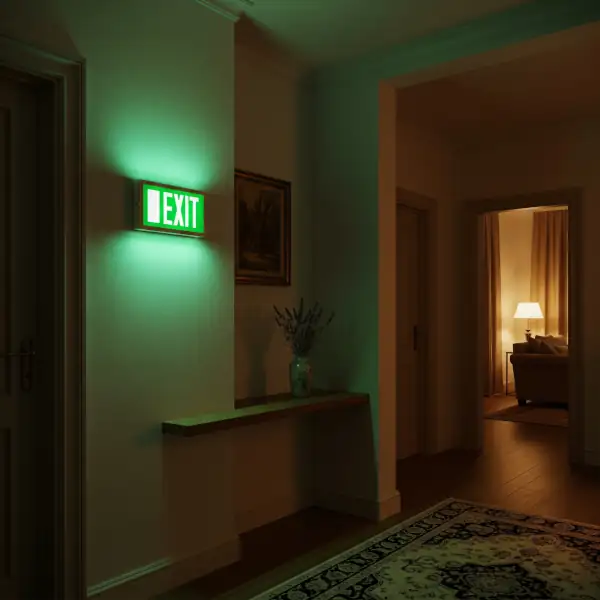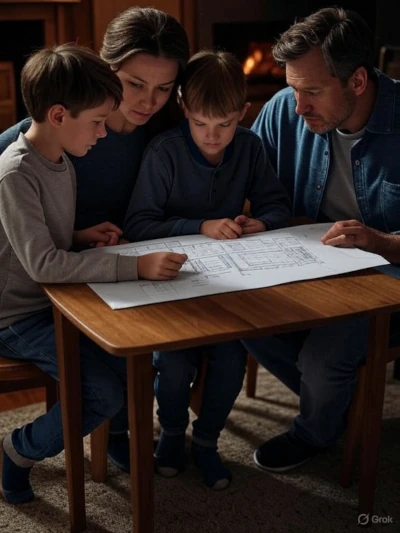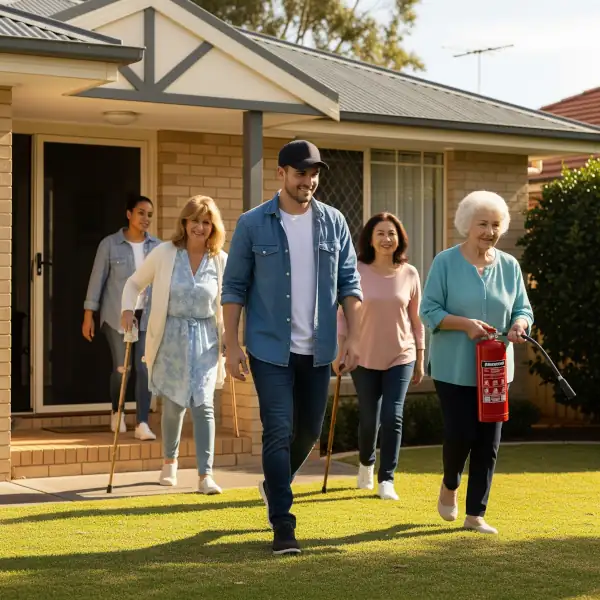
Why a Fire Escape Plan is Essential for Your Safety
At Rental Safety Inspections, your safety is our top priority. While properly installed and functioning smoke alarms are crucial, knowing how to react when they sound is equally vital. A comprehensive fire escape plan for tenants can be the difference between a safe evacuation and a dangerous situation, safeguarding both you and your rental property here in Melbourne. This guide, relevant for tenants as of July 2025, will walk you through creating a robust rental property fire escape plan tailored for your safety.

Creating Your Tenant Fire Escape Plan: Essential Steps for Rental Safety
Developing a clear and practiced home fire escape plan is key to ensuring everyone’s safety. This guide provides essential steps for tenant fire safety, ensuring you’re prepared for any emergency.
Map Your Exits Thoroughly: Your Home’s Emergency Pathways
Walk through every room in your rental home and identify all windows and doors that could serve as an escape route. Think about primary and secondary exits. Crucially, ensure that every room has at least two escape routes in case one becomes blocked by fire or smoke. This could be a door and a window, or two different doors leading to different parts of the house. This redundancy is vital for tenant fire safety. If a window is an exit, ensure you know how to open it quickly and that it isn’t painted shut or blocked. If you live on an upper floor, consider how you’d safely exit from a window. For apartment dwellers in Melbourne, this might involve fire escapes or designated exit stairwells. Make this an interactive and educational activity for all household members, especially children. This helps them understand the layout and their role in the plan, fostering a sense of responsibility for family fire safety.
Clear and Accessible Paths: Unobstructed Evacuation Routes
Regularly check that all identified escape routes, including hallways, doorways, and paths to windows, are free of any obstructions. This means no furniture, boxes, or clutter blocking the way. A clear path ensures a swift emergency evacuation. Ensure that all doors and windows leading outside can be opened easily and quickly from the inside. Lubricate hinges if necessary and check locks to ensure they don’t impede emergency egress. This is a critical component of rental safety tips. While security is important, ensure that security bars or grates on windows have quick-release mechanisms that can be operated from the inside without a key. This balances home security with crucial fire preparedness.
Establish a Safe Meeting Point: Your Family’s Designated Muster Station
Choose a specific, easily identifiable outdoor landmark as your family’s designated meeting point. This could be a neighbour’s house, a distinct street sign, a mailbox, or a large tree across the street. This ensures everyone knows where to go for fire assembly points. Ensure the meeting point is a safe distance away from the rental property and out of the way of emergency responders. This prevents re-entry and keeps the area clear for emergency services. The meeting point is where you’ll confirm that everyone has safely evacuated. Teach children to go directly to this spot. This is vital for family emergency planning.
Ensure Visible Street Numbers: Guiding Emergency Responders
Confirm that your rental property’s street number is clearly visible from the road, both during the day and at night. This is paramount for emergency services to locate you quickly in a fire emergency, particularly in suburbs of Melbourne or regional Victoria where house numbers might be less prominent. If your house number is faded, obscured by landscaping, or not present, take steps to improve its visibility. This could involve painting it on the curb (with landlord permission), installing new, large house numbers, or ensuring porch lights illuminate the numbers at night. This directly impacts the speed of emergency response time.

Practicing Your Fire Escape Plan: Preparedness is Key
A plan is only effective if it’s regularly practiced. Rehearse your fire escape plan at least twice a year, or more often, to ensure everyone remains familiar and comfortable with the process. Consider practicing during different times of the day and night. Consistent fire drills at home build muscle memory. To truly prepare, make practices engaging and realistic. Practice crawling to exits while staying low to the ground to simulate navigating through smoke. Smoke rises, so the air closest to the floor is often clearer. This is a critical fire safety tip. Turning off lights or even using blindfolds (under strict supervision) can simulate low-visibility conditions due to smoke, turning it into a crucial learning exercise for the whole family. This enhances fire emergency preparedness. During practice, also test your smoke alarms to ensure they are working. Regular smoke alarm testing is a legal requirement in Victoria for rental properties. For more information on dealing with alarms, see our post: How to Safely Hush a Smoke Alarm in Australia.
Stay Safe: Your Commitment to Tenant Fire Safety
With a well-developed and regularly practiced home escape plan, you and your household will be ready to act swiftly and safely if a fire occurs. Remember, fire safety for tenants is an ongoing commitment and a shared responsibility.
For more comprehensive rental safety resources and tenant preparedness tips, including a detailed smoke alarm guide for renters and information on rental property safety regulations in Victoria, please visit the Safety Hub. You might also find our Fire Escape Plan Guide for Tenants helpful, and for broader home safety, consider our insights on CO Detectors in Melbourne: Essential Home Safety for Today’s Homes.
- Ready to comply with Victoria’s rental laws? Book your Electrical check for $200 + GST or choose our full compliance package for $399 + GST.

